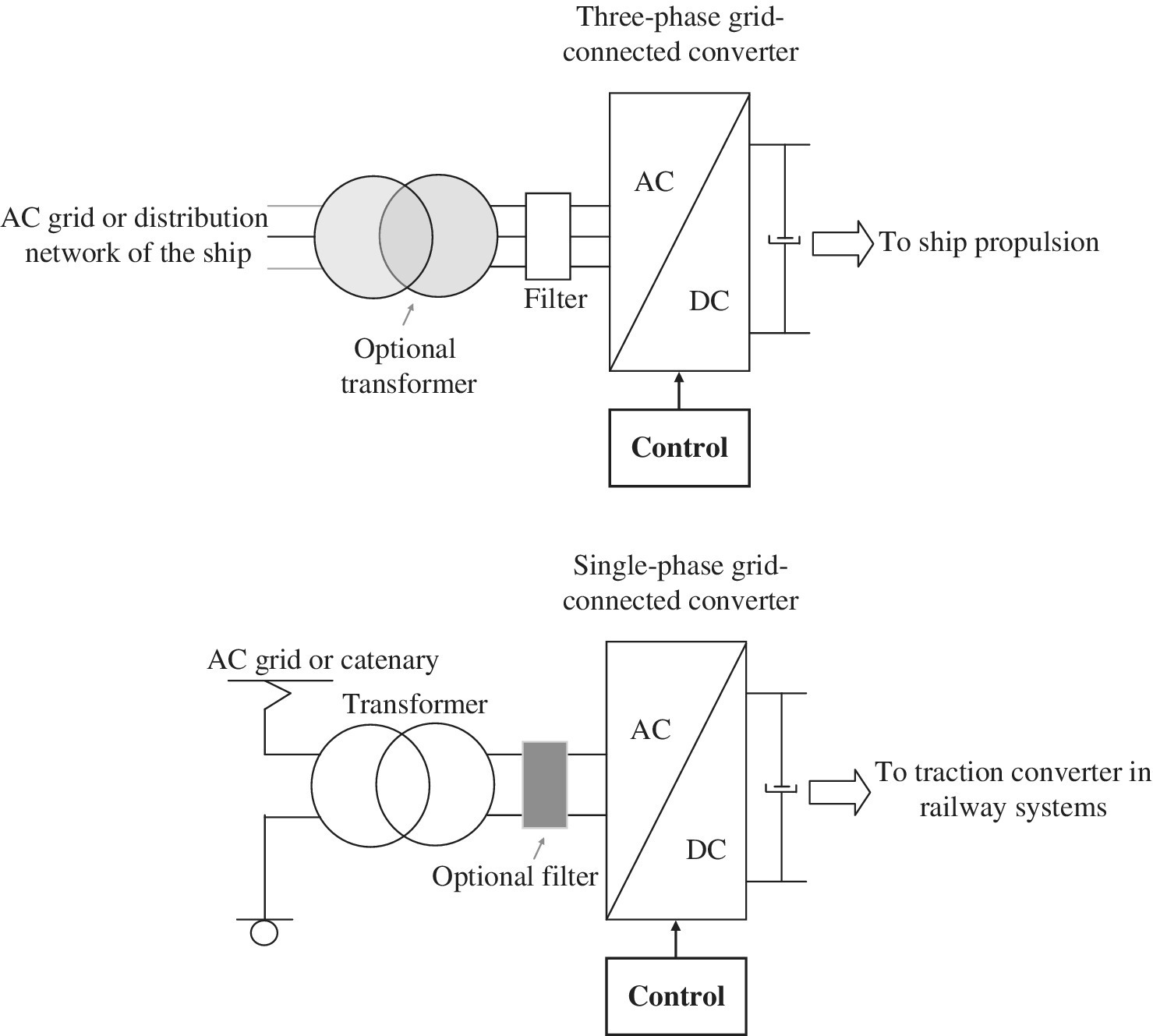4 Control of grid‐connected converters
Aritz Milicua and Gonzalo Abad
4.1 Introduction
In this chapter the control of AC grid‐connected converters is studied. More specifically, regenerative, also known as reversible or back‐to‐back, converters connected to the AC grid are studied. As was described in Chapter 1, these are controlled converters typically constructed by arrangements of insulated‐gate bipolar transistors (IGBTs) and diodes, enabling one to bi‐directionally control the exchange of power with the grid. According to the applications that will be later studied in this book, regenerative converters can be in some cases employed in ship propulsion in a three‐phase converter version and can also be employed in a single‐phase configuration in railway traction. A schematic representation of the two possible scenarios is depicted in Fig. 4-1.

Fig. 4-1 Grid‐connected converter configurations
Basically, the usage of reversible converters in these two applications against passive or diode front ends can make sense when regenerative power produced by the application can be delivered to the ship’s electric grid or to the catenary. As is described in forthcoming chapters, this regenerative possibility can be useful in certain circumstances. Therefore, owing to this, the necessity of studying grid‐connected converters arises in this chapter.
On the other hand, as can be ...
Get Power Electronics and Electric Drives for Traction Applications now with the O’Reilly learning platform.
O’Reilly members experience books, live events, courses curated by job role, and more from O’Reilly and nearly 200 top publishers.

